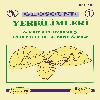Zift' in kömür akışkanlığına etkisi ve kömür yüzeyi ıslanma özelliğinin karbonizasyon sıcaklığı ile değişimi
Tunçbilek linyit kömürü ve 200°, 400°, 600°, 800° ve 1000°C karbonizasyon sıcaklıklarında elde edilen TK200, TK400, TK600, TK800, ve TK1000 koktozlarının farklı zift oranları ile oluşturdukları ikili karışımlarda; zift oranının karışımların akışkanlığına ve karbonizasyon sıcaklığının kömür yüzeyi ıslanma özelliğine olan etkisi Gieseler plastometresi ile yapılan deneyler ile araştırılmıştır. Karışımların maksimum akışkanlıkları artan zift oranları ile yükselmiştir. En düşük maksimum akışkanlık değerleri TK400 + zift ikili karışımlarında elde edilmiş olup, TK400'ün yüzey ıslanma özelliği en iyi olan koktozu olduğu belirlenmiştir, ikili karışımlarda maksimal akışkanlık değerlerinin TK400, TK200, TK, TK600, TK800, ve TK1000 sırasına göre arttığı, dolayısıyla yüzey ıslanabilirlik özelliğinin aynı sıraya göre azaldığı tespit edilmiştir.
The effect of pitch on the fluidity of coal and the variation of coal surface wettability with carbonization temperature
The effect of pitch ratio on the fluidity of coal and the effect of carbonization temperature on the wetting behaviour of coal surface in the binary mixtures have been investigated with the experimental runs performed by the constant-torque Gieseler plastometer. The binary mixtures consisted of Tunçbilek brown coal or its semicokes and the pitch in different ratios. TK200, TK400,TK600, TK800 and TK1000 semicokes were obtained at 200°, 400°, 600°, 800° and 1000 °C carbonization temperatures respectively. It was found that the maximum fluidity values of the binary mixtures increased with increasing pitch ratios. The lowest maximum fluidity values were obtained in TK400 + zift binary mixture and it was shown that TK400 is the semicoke which has the optimum surface wetting behaviour. It was determined that the maximum fluidity values increase according to the order of TK400, TK200, TK, TK600, TK800 and TK1000; consequently the surface wettability also decreases in the same order.
___
- Bujnowska, B. and Collin, G., (1994). Co-carbonization of coals with coal-tar pitch. Cokemaking International, Vol. 6, No. 2, pp. 25-31.
- Cengizler, H., (1987). The variation of the wettability properties of coal surfaces by temperature. Yüksek Lisans Tezi, Dokuz Eylül Üniversitesi, Müh. Fak., Fen Bil. Ens.
- Kemal, M., (1974). Herstellung von formkoksfür metallurgische prozesse aus feinkörnigen schwelkoksen erdiger Braun kohlen. Ph.D. Thesis, Teknische Universitaet Clausthal.
- Kemal, M., (1989). The effect of carbonization temperature on the wetting behaviour of the brown coal surface. Braunkohle 41, heft 6, Juni.
- Kemal, M., (1980). Tunçbilek kömürünün metalürjik kok üretiminde kullanılma olanakları, Doçentlik Tezi, Ege Uni. Makina Müh. Fak. Maden Müh. Böl., İzmir.
- Lin, M.F. and Hong, M.T., (1986). The effect of coal blend fluidity on the properties of coke. Fuel, Vol. 65, pp. 307-311, March.
- Maroto-Valer, M.M., Andresen, J.M. and Snape, C.E., (1988). In Situ 1H NMR study of the fluidity en hancement for a bituminous coal by coal tar pitch and a hydrogen-donor liquefaction residue, Fuel, Vol .77, N. 9110, pp. 921-926.
- Standard method of test for plastic properties of coal by the Gieseler plastometer according to prospectus no. 222/1-No.124.
- Stephens, J. N., (1958). The effect of the pitch additions on the fluidity of coal. Coke and Gas, pp. 296-302 .
- Vankrevelen, D.W., (1981). Coal. Elsevier, Amsterdam.
- Wilkinson, H. C., 1960. The influence of the plasticity of coal on the quality of coke. The Gas World-Coking, Sheffield, pp. 39-46.
- ISSN: 1019-1003
- Yayın Aralığı: Yılda 2 Sayı
- Başlangıç: 1986
- Yayıncı: Çukurova Üniversitesi Jeoloji Mühendisliği Bölümü
Sayıdaki Diğer Makaleler
Erzurum şehir merkezi batı kesiminin jeoteknik özellikleri
Necmi YARBAŞI, M. Salih BAYRAKTUTAN
Mineral association and significance of the Efemçukuru epithermal gold deposit, İzmir-Turkey
Engin MERİÇ, Niyazi AVŞAR, Fulya BERGİN, İpek F. BARUT
Hazar Gölü güneyinin jeolojik ve petrografik özellikleri
Marmara Havzası Geç Kuvaterner çökellerinin kimyasal-element bileşiminin incelenmesi
Kızlaç T3A tünelinde nihai yerdeğiştirmelerin tahmini (Bahçe /Osmaniye)
Karabiga (Çanakkale) Granitoyidi doğu kısmının petrografik ve jeokimyasal özellikleri
